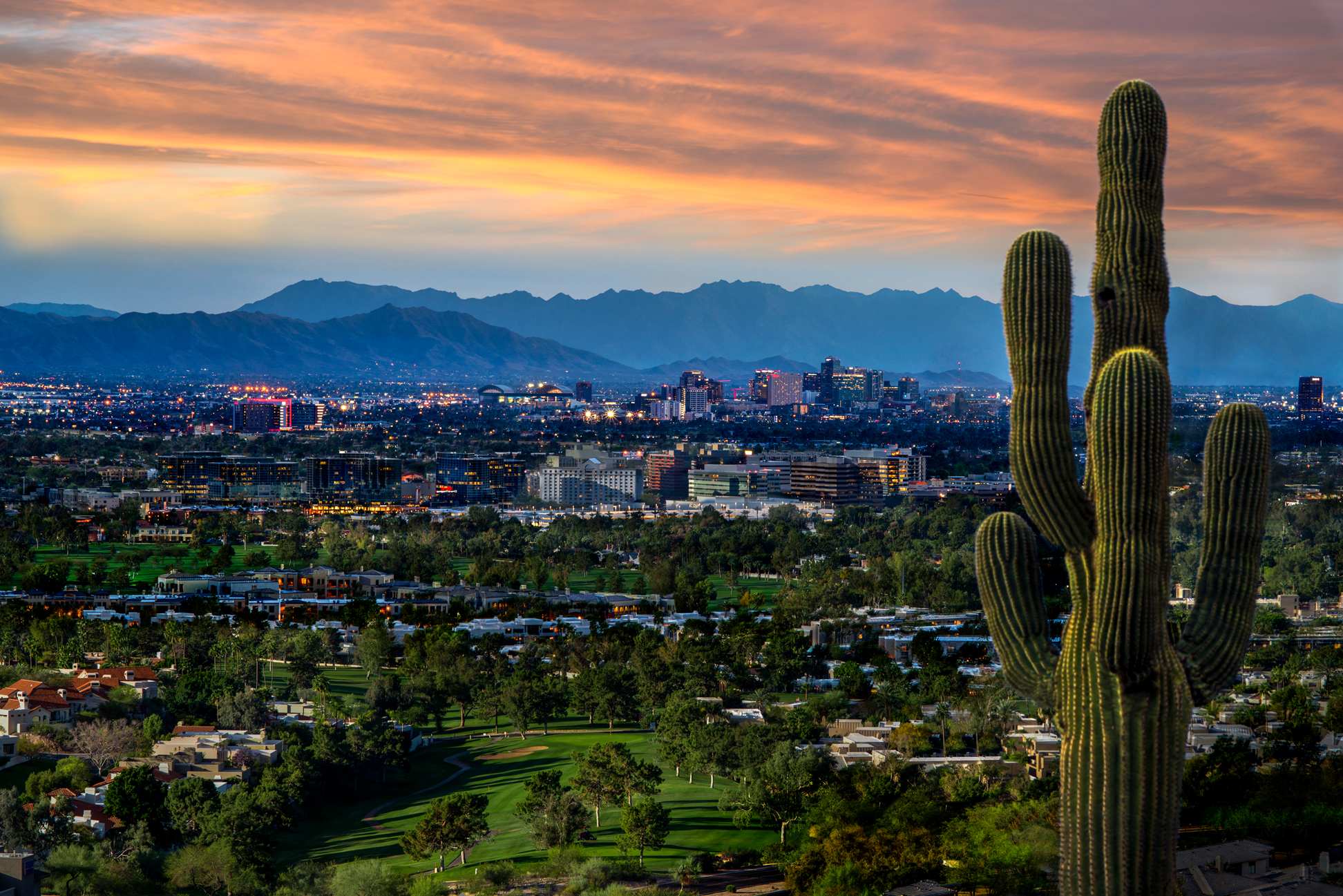The U.S. Census Bureau released franchise statistics from the 2017 Economic Census on August 26. Nearly 300 different types of business are franchises, though the only data available at the state level are for full- and limited-service restaurants. Comparing Arizona to the U.S., 41.6 percent of restaurants (combined total of full- and limited-service) in Arizona were franchise establishments while that figure was 35.0 percent for the U.S. Limited-service restaurants were much more likely to be franchise establishments, as 63.2 percent of limited-service restaurants in Arizona were franchises and 57.3 percent nationally were. For both full- and limited-service restaurants, the owner is more likely to be a franchisee rather than a franchisor.
READ ALSO: Are short-term rentals investors ruining Arizona housing market?
June was the 25th consecutive month that Phoenix topped home price increases on the S&P CoreLogic Case-Shiller report, at 29.3 percent year-over-year. Nationally, home price increases were at a record high in June with an 18.6 percent annual gain – the largest increase in over 30 years. All metropolitan areas included in the report had double-digit increases in home prices year-over-year in June with Chicago posting the smallest increase at 13.3 percent. Phoenix, San Diego and Seattle were the top three areas at 29.3 percent, 27.1 percent and 25.0 percent increases, respectively. The 20-city composite posted a gain of 19.1 percent according to the August 31 release.
U.S. house prices rose 17.4 percent over the year in the second quarter 2021, making it the 40th consecutive quarter of house price increases according to the Federal Housing Finance Agency House Price Index. All states posted a one-year price appreciation for the second quarter 2021. The five states with the largest price gains were Idaho at 37.1 percent, Utah at 28.3 percent, Arizona at 23.9 percent, Montana at 23.7 percent and Rhode Island at 23.7 percent. Given the top four states are in the Mountain region, it is no surprise that it was the area of the country with the largest price gains. The report provides data on regions, states and the largest 100 metropolitan areas for the purchase-only index. The all-transactions index, which includes purchase and refinance mortgages, provides price appreciation data for all metro areas. Three Arizona metros ranked among top metropolitan areas using the all-transaction index: Lake Havasu City-Kingman at 20.4 percent, Phoenix at 19.5 percent and Prescott Valley-Prescott at 17.7 percent. Other Arizona metropolitan areas had increases of 18.2 percent in Yuma, 16.8 percent in Flagstaff, 16.7 percent in Sierra Vista-Douglas and 15.7 percent in Tucson.
July unemployment rates were less than the same month a year ago for all but one metropolitan area included in the Metropolitan Area Employment and Unemployment release dated September 1. Only Pueblo, CO had a higher rate in than a year ago. All Arizona metropolitan areas had unemployment rates in July that were lower than a year ago by a matter of several percentage points (ranging from 2.9 percentage points in Sierra Vista-Douglas to 5.0 percentage points in Flagstaff). Despite having a decreasing jobless rate, Yuma was the metropolitan area with the highest unemployment rate in the country at 20.1 percent. The lowest unemployment rate among metropolitan areas was 1.8 percent in Logan, UT-ID.

The U.S. gained 235,000 nonfarm payroll jobs in August, compared to a revised increase of 1,053,000 in July, seasonally adjusted. The monthly average increase so far this year has been 586,000 according to the September 3 Employment Situation release from the Bureau of Labor Statistics. Professional and business services followed by transportation and warehousing were the top sectors for increased employment over the month. The number of people not in the labor force decreased over the month but was still higher than this time last year. The seasonally adjusted unemployment rate for the nation ticked down 0.2 percentage points to 5.2 percent for August.
The U.S. trade deficit narrowed in July to $70.1 billion, down from a revised figure of $73.2 billion in June. Increased exports coupled with lower imports contributed to the smaller goods and services deficit. July exports were up $2.8 billion to $212.8 billion and imports decreased $0.4 billion to $282.9 billion. Exports of goods increased $2.7 billion and services increased $0.1 billion based on the September 2 joint release from the U.S. Census Bureau and U.S. Bureau of Economic Analysis. Year-to-date, the July goods and services deficit was 37.1 percent over the same period in 2020.
There were 826 bankruptcy filings in Arizona during the month of August, bringing the year-to-date total to 6,760, down 25.5 percent from the same period a year ago. The last time the year-to-date total for August was this low was 2007. Year-to-date, the Phoenix office was down 27.2 percent, the Tucson office down 21.4 percent and the Yuma office down 19.6 percent. La Paz was the only county to have a higher number of filings year-to-date for August compared to a year ago with 11 this year versus 10 last year. The Phoenix office includes Apache, Coconino, Gila, Maricopa, Navajo, and Yavapai counties. The Tucson office handles Cochise, Graham, Greenlee, Pima, Pinal, and Santa Cruz counties, while the Yuma office represents La Paz, Mohave, and Yuma counties.
Producer prices rose 0.7 percent over the month seasonally adjusted in August according to the September 10 Bureau of Labor Statistics release. Final demand goods increased 1.0 for the month, with a 2.9 percent rise in final demand food prices contributing to that. Final demand services increased 0.7 percent. The change in final demand index over 12-months, unadjusted, was 8.3 percent, which was the largest annual increase since November 2010 (when the 12-month data were first calculated).
Valorie H. Rice is the Senior Business Information Specialist at the Economic and Business Research Center (EBRC) in the University of Arizona’s Eller College of Management.




